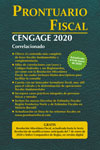Este artículo fue publicado en: julio 30, 2015
In school, we learn about geniuses and their ideas, but how did they get those ideas? What are the mental processes, attitudes, work habits, behaviors, and beliefs that enable creative geniuses to view the same things as the rest of us, yet see something different?
The following are seven principles that I’ve learned during my lifetime of work in the field of creative thinking — things that I wish I’d been taught as a student.
1. You Are Creative
Índice
Artists are not special, but each of us is a special kind of artist who enters the world as a creative and spontaneous thinker. While creative peoplebelieve they are creative, those who don’t hold that belief are not. After acquiring beliefs about their identity, creative people become interested in expressing themselves, so they learn thinking habits and techniques that creative geniuses have used throughout history.
2. Creative Thinking Is Work
You must show passion and the determination to immerse yourself in the process of developing new and different ideas. The next step is patience and perseverance. All creative geniuses work with intensity and produce an incredible number of ideas — most of which are bad. In fact, more bad poems were written by major poets than by minor poets. Thomas Edison generated 3,000 different lighting system ideas before he evaluated them for practicality and profitability.
Te puede interesar
 Prontuario Fiscal 2020
Prontuario Fiscal 2020Ir al Prontuario Fiscal 2021 -> En 2020 entrarán en vigor nuevas y numerosas disposiciones fiscales en materias tan importantes...
3. You Must Go Through the Motions
When producing ideas, you replenish neurotransmitters linked to genes that are being turned on and off in response to challenges. Going through the motions of generating new ideas increases the number of contacts between neurons, and thereby energizes the brain. Every hour spent activating your mind by generating ideas increases creativity. By painting a picture every day, you would become an artist — perhaps not Van Gogh, but more of an artist than someone who has never tried.
4. Your Brain Is Not a Computer
Your brain is a dynamic system that evolves patterns of activity, rather than simply processing them like a computer. The brain thrives on creative energy that results from experiences, real or fictional. The brain cannot tell the difference between an «actual» experience and one that is imagined vividly and in detail. Both are energizing. This principle helped Walt Disney bring his fantasies to life and also enabled Albert Einstein to engage in thought experiments that led to revolutionary ideas about space and time. For example, Einstein imagined falling in love and then meeting the woman he fell in love with two weeks later. This led to his theory of acausality.
5. There Is No Right Answer
Aristotle believed that things were either «A» or «not A.» To him the sky was blue or not blue — never both. Such dualistic thinking is limiting. After all, the sky is a billion different shades of blue. We used to think that a beam of light existed only as a wave until physicists discovered that light can be either a wave or a particle, depending on the viewpoint of the observer. The only certainty in life is uncertainty. Therefore when trying to produce new ideas, do not evaluate them as they occur. Nothing kills creativity faster than self-censorship during idea generation. All ideas are possibilities — generate as many as you can before identifying which ones have more merit. The world is not black or white. It is gray.
6. There Is No Such Thing as Failure
Trying something without succeeding is not failing. It’s producing a result. What you do with the result — that is, what you’ve learned — is the important thing. Whenever your efforts have produced something that doesn’t work, ask the following:
Te puede interesar
 Cálculo de Una Variable: Trascendentes Tempranas
Cálculo de Una Variable: Trascendentes TempranasEl estudio del cálculo ayuda a los estudiantes a comprender la disciplina de manera práctica. El modo más importante de...
- What have I learned about what doesn’t work?
- Can this explain something that I didn’t set out to explain?
- What have I discovered that I didn’t set out to discover?
People who «never» make mistakes have never tried anything new. Noting that Thomas Edison had «failed» to successfully create a filament for the light bulb after 10,000 attempts, an assistant asked why the inventor didn’t give up. Edison didn’t accept what the assistant meant by failure. «I have discovered ten thousand things that don’t work,» he explained.
7. You Don’t See Things as They Are -You See Them as You Are
All experiences are neutral and without inherent meaning until your interpretations give them meaning. Priests see evidence of God everywhere, while atheists see the absence of God everywhere. Back when nobody in the world owned a personal computer, IBM’s market research experts speculated that there were no more than six people on earth who needed a PC. While IBM saw no market potential for PCs, two college dropouts named Bill Gates and Steve Jobs viewed the same data as IBM and perceived massive opportunity. You construct reality by how you choose to interpret your experiences.
See original text: http://goo.gl/f5PqfN
Te puede interesar
 Principios de economía
Principios de economía¿Por qué debería usted estudiar economía? La razón es sencilla: le ayudará a comprender el mundo en que vive. Existen...






